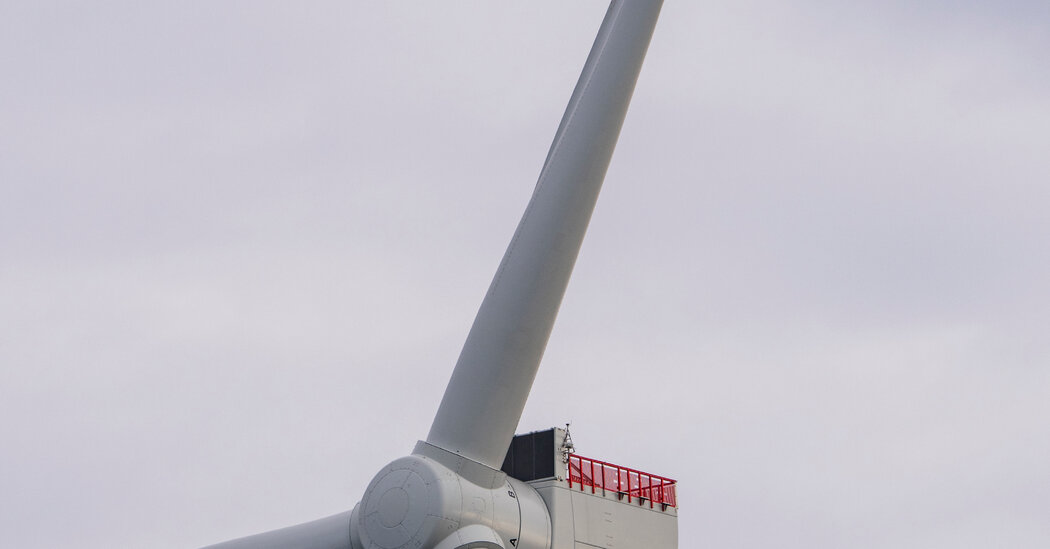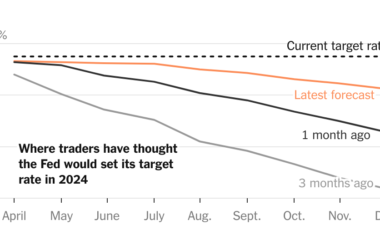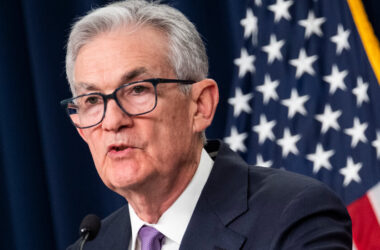In early January in San Antonio, dozens of Ph.D. economists packed into a small windowless room in the recesses of a Grand Hyatt to hear brand-new research on the hottest topic of their annual conference: how climate change is affecting everything.
The papers in this session focused on the impact of natural disasters on mortgage risk, railway safety and even payday loans. Some attendees had to stand in the back, as the seats had already been filled. It wasn’t an anomaly.
Nearly every block of time at the Allied Social Science Associations conference — a gathering of dozens of economics-adjacent academic organizations recognized by the American Economic Association — had multiple climate-related presentations to choose from, and most appeared similarly popular.
For those who have long focused on environmental issues, the proliferation of climate-related papers was a welcome development. “It’s so nice to not be the crazy people in the room with the last session,” said Avis Devine, an associate professor of real estate finance and sustainability at York University in Toronto, emerging after a lively discussion.
The conference, which is among the economics profession’s biggest, tends to be a distillation of what the field is fixated on at any given moment, and there’s plenty of evidence that on the heels of the hottest year in recorded history, climate is in the spotlight.
There were papers on the local economic impact of wind turbine manufacturing, the stability of electricity grids as they absorb more renewable energy, the effect of electric vehicles on housing choices, how wildfire smoke strains household finances. Others analyzed the benefits of a sea wall for flood risk in Venice, the economic drag of uncertainty about climate policy, the flow of migrants displaced by extreme weather, how banks are exposed to emissions regulations and the impact of higher temperatures on factory productivity — just to name a few.
According to the president of the American Finance Association, Monika Piazzesi, fully half the papers submitted to her group were about environmental, social and governance investing, broadly defined — and she didn’t have nearly enough slots to include them all. (Each association solicits and selects its own papers for presentation at the conference.)
Janet Currie, the incoming president of the American Economic Association, chose an environmental economist, Michael Greenstone of the University of Chicago, to deliver the conference’s keynote lecture. He focused on the global challenge of shifting to renewable energy and the corresponding potential to alleviate air pollution that is particularly deadly in developing countries like India and Indonesia.
“This isn’t just a series of topics, but it’s a big, interrelated problem,” Dr. Currie said. “Not only economists but everybody else is realizing that this is a first-order problem, and it’s affecting most people in some way. That inspires everyone to want to work on it using their own particular lens.”
Or as Heather Boushey, a member of the White House Council of Economic Advisers, put it while moderating a panel on the macroeconomics of climate change: “We’re all climate economists now.”
It’s not as though economics had ignored climate change. Research going back decades has forecast the toll that warming will take on gross domestic product — an “externality,” in economics parlance — and extrapolated from that a calculation for how much a ton of carbon emissions should be taxed.
“There was a period of time in which at least some people would think: ‘Carbon is an uninternalized externality. We know how to address that,’” said Allan Hsiao, an assistant professor at Princeton University. They were thinking, “Maybe the issue is important,” he added, “but the underlying economics and tensions, the not-so-obvious, subtle mechanisms, were not there.”
That perception has changed. A solution preferred by economists, setting a cap on carbon emissions and creating a market for trading permits, failed in 2009 under the weight of a weak economy, administrative complexity and determined opposition. In recent years, a different approach has emerged: granting incentives for clean energy production, which pays more attention to political realities and the equitable distribution of costs and benefits, two themes that have also garnered more attention in economics circles lately.
It has also created a collision of new questions, providing fodder for a bonanza of dissertation topics. “Now people are realizing that there’s just a lot of richness,” Dr. Hsiao explained.
The surge of climate research in economics comes in part from established figures who are finding ways to pursue related questions as an offshoot of their own specialization. But much of the enthusiasm emanates from newcomers to the field who are just now building their publication records, learning how to wrangle the universe of geospatial data from sources like weather satellites, temperature sensors and historical rainfall records.
Take Abigail Ostriker, who is doing a postdoctoral fellowship at Harvard before starting as an assistant professor at Boston University this summer. She had soured on climate as an area of focus while in college during the 2010s, after the death of emissions-trading legislation in Congress ushered in a relatively stagnant period for climate policy.
But she picked back up on it in graduate school upon realizing that there was ample work in figuring out how societies can deal with the effects of climate change — now a new normal, not a faraway threat.
“I felt like climate change is here,” said Dr. Ostriker, who earned her degree with a paper on how floodplain regulation in Florida shifted home construction. “I’ve been turning my attention to the adaptation side of things — where are we going to see these consequences, and what policies are going to protect people from the consequences, and are policies perhaps going to exacerbate them in perverse ways?”
The emerging generation of climate economists isn’t just bringing new ideas and energy. The specialization is drawing more women and people of color into economics, helping to change the face of a field that has long been notoriously white and male, said Paulina Oliva, an associate professor at the University of Southern California who helped select papers for the American Economic Association’s program at the San Antonio conference.
“That to me has been particularly exciting, because you know how difficult it’s been for economics to have diversity,” Dr. Oliva said.
To pull young researchers into the field, it helps that demand for climate economists is booming — at colleges and universities, but also government agencies, private companies and nonprofit think tanks. A website that tracks job postings for academic economists worldwide, EconJobMarket.org, shows that 5.5 percent of ads mentioned the phrase “climate change” in 2023. That was up from 1.1 percent a decade earlier, said Joel Watson, a professor at the University of California, San Diego, who runs the site.
Those opportunities include many in the U.S. government, which has been embedding climate priorities in a range of agencies since President Biden took office in 2021. Climate impacts are now part of the cost-benefit analysis of new regulations, factored into economic growth projections and reflected in budget forecasts.
The Inflation Reduction Act didn’t set a price on carbon, which economists had advocated for decades. But Noah Kaufman, a research scholar at Columbia University’s Center on Global Energy Policy, thinks its tools could be guided by economic analysis to transform the energy system — while cushioning the impact for communities that depend on fossil fuel production and making sure the benefits of renewable energy investment are broadly shared.
“Economists need to catch up to the policymakers,” said Dr. Kaufman, who did a stint working on climate policy at Mr. Biden’s Council of Economic Advisers. “It’s unfortunate that we didn’t produce this literature decades ago. But given that we didn’t, it’s pretty exciting and a unique opportunity to try to be helpful now.”




